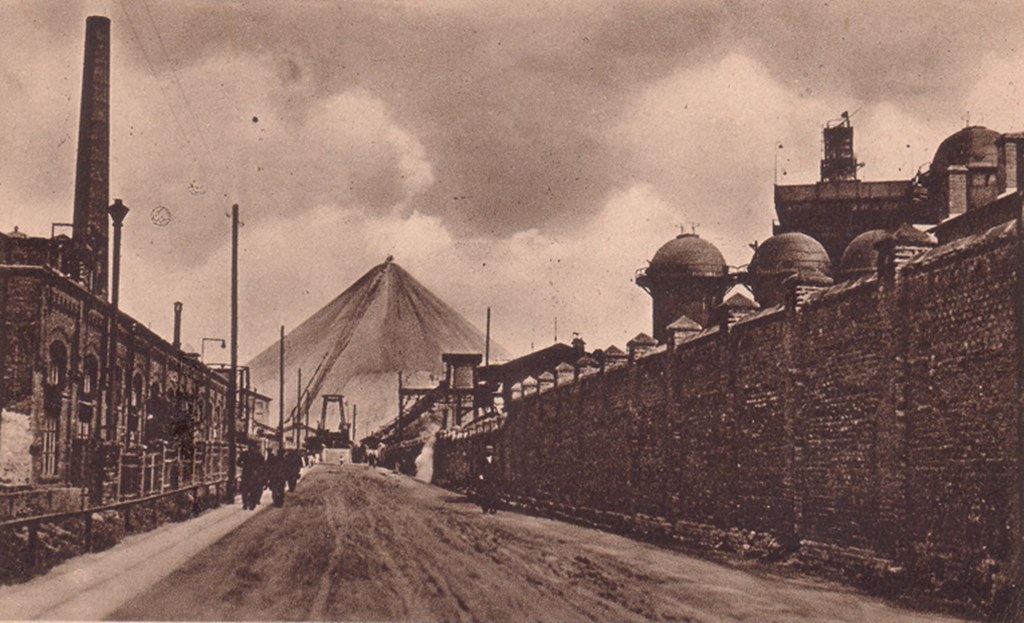Zaglembie (Zagłębie) Guided tours in Poland

Poland abounds in places that draw tourists with qualities other than pristine nature, scenic views or beautiful architecture. One such area is called Zagłębie, a place once celebrated for its heavy industry. The local mines and steelworks saw the rapid growth of housing estates of Będzin, Sosnowiec, Dąbrowa Górnicza and Czeladź in the decades spanning the 19 thand 20th centuries.
We have frequent enquiries to tour the area. Before 1939, the aglomeration boasted a population of several hundred thousand inhabitants, including a massive Jewish community. The daily labour of heavy industry was no obstacle for the Jews of Zaglembie to develop a diverse cultural and political life. Będzin and the area chiefly attract the descendants of Holocaust survivors and grandchildren of interwar emigres, who fled Poland from famine and unemployment.
The passage of time, the ravages of war and the barbarian policies of Communist Poland notwithstanding, the cities in the area still boast a number of locations with a vibe of the former Zagłębie and its people.
Please find a list of sample locations we explore with our Clients in the area:
Będzin
- well-preserved downtown area with Małachowskiego, Modrzejowska, Potockiego Streets and 3 Maja Square
- remains of the medieval town of Bedzin ( defense walls ) and nicely set 14th c. castle built by King Casimir the Great
- remains of the historic Jewish District on Castle Hill with the sites of the former synagogue, ritual bath and cheders
- existing (Castle Hill and Bedzinska Street ) and defunct Jewish cemeteries
- the area of the wartime Bedzin ghetto ( districts Kamionka and Warpie ), incl. Rutka Laskier’s house and the Bedzin Ghetto Victims Monument
- recently opened museum-cafe “Jerozolima” located in Modrzejowska Street
And last but not least : two uniquely surviving former prayer houses : “Mizrachi” opened 100 years ago and a place called Cukerman’s Gate, discovered and operated by a group of local residents, dedicated to preservation of Jewish heritage in Zaglebie.
Sosnowiec
- prewar city centre with the main promenade (Modrzejowska Street) and historic, over 150-year-old building of the Railway Station
- palaces and gardens formerly belonging to local industrialists ( Schoen and Dietl )
- Dekerta and Targowa Streets, where the former Great Synagogue and numerous prayer houses were located
- places connected to local heroes: Wladyslaw Szpilman, a Sosnowiec-born Jewish composer born, and Jan Kiepura, the most celebrated singer of prewar Poland.
- remains of the wartime Jewish ghetto in Stary Sosnowiec district and building of Dulag ( transit camp ) located in a prewar gymnasium building
- football stadium in Mireckiego Street, Sosnowiec Umschlagplatz, or the place of round-up of local Jewish citizens before their deportation to the camps. The site recently commemorated with a monument.
- Jewish orphanage and hospital buildings as well as buildings of numerous prewar Jewish organisations
- Jewish cemetery in Gospodarcza Street with a large surviving part filled with hundreds of oldmatzevot, and old cemetery in Modrzejow, one of Sosnowiec’s earliest neighborhoods known for its long documented Jewish presence
- remains of the Srodula ghetto
Dąbrowa Górnicza
- town centre with 3 Maja Street and surroundings of Huta Bankowa, oldest steel factory in the area
- Sztygarka Museum, famous site documenting local history
- sites of the former synagogue at Chopina 32 Street and remains of Dabrowa Jewish cemetery in Ludowa Street
Czeladź
- industrial complex of the Saturn coal mine with a beautiful 19th c. shaft & mining and administration buildings
- streets of the historic Old Town with the Neoromanesque Church of Saint Stanislaw and the site of the former synagogue
- one of the best surviving Jewish cemeteries in Poland, otherwise known as the Czeladz-Bedzin cemetery in Bedzinska Street
- Berman prayer house and WWII Jewish ghetto area